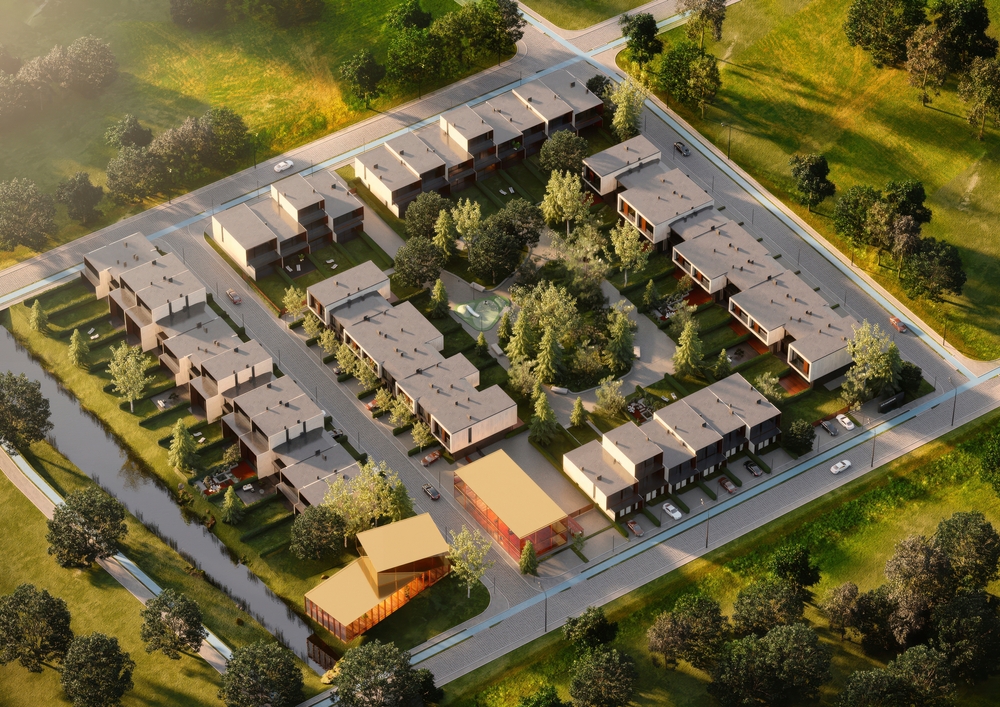The Role of Green Spaces in Housing Communities
In recent years, the importance of green spaces within housing communities has gained increasing recognition worldwide. As urban areas continue to expand and densify, the integration of parks, gardens, and natural landscapes into residential neighborhoods plays a crucial role in enhancing the quality of life for residents. By 2025, sustainable urban planning emphasizes green spaces not only as aesthetic additions but as essential components that promote environmental health, social cohesion, and economic value. This article explores the multifaceted role of green spaces in housing communities, highlighting their benefits, challenges, and future prospects.

Environmental Benefits of Green Spaces
One of the primary functions of green spaces in housing communities is their positive environmental impact. Urban green areas serve as natural lungs for cities by improving air quality, reducing pollution, and regulating urban temperatures.
Air Quality Improvement
Plants and trees absorb carbon dioxide and release oxygen through photosynthesis, which helps to purify the air. In densely populated housing areas, where vehicle emissions and industrial pollutants are common, green spaces act as natural filters. According to studies projected for 2025, neighborhoods with ample green coverage have significantly lower levels of airborne particulate matter compared to areas lacking vegetation. This contributes to reduced respiratory ailments and overall healthier living conditions.
Urban Heat Island Mitigation
Cities tend to experience higher temperatures than surrounding rural areas, a phenomenon known as the urban heat island effect. Concrete, asphalt, and buildings absorb and retain heat, making urban environments uncomfortable during hot seasons. Green spaces mitigate these effects by providing shade and facilitating evapotranspiration, which cools the air naturally. Incorporating parks and tree-lined streets in housing communities helps moderate local temperatures, reducing the need for artificial cooling and cutting energy consumption.
Biodiversity and Ecosystem Support
Green spaces also serve as habitats for various species of birds, insects, and small mammals, promoting biodiversity even within urban settings. This contributes to ecological balance and provides educational opportunities for residents to connect with nature. By 2025, urban planners are increasingly prioritizing native plantings and wildlife corridors within housing projects to support local ecosystems and enhance environmental resilience.
Social and Psychological Benefits
Beyond environmental advantages, green spaces significantly influence the social dynamics and mental well-being of housing community residents. Access to natural surroundings has been linked to numerous psychological and social benefits.
Enhancing Community Cohesion
Parks, playgrounds, and community gardens provide shared spaces where residents can socialize, organize events, and build relationships. These communal green areas act as gathering spots that foster a sense of belonging and neighborhood identity. Studies show that communities with well-maintained green spaces report higher levels of social interaction and lower instances of crime. In 2025, with increasing concerns about urban isolation, the role of green spaces as social equalizers is more vital than ever.
Mental Health and Stress Reduction
Exposure to nature has been scientifically proven to reduce stress, anxiety, and depression. Even short visits to green areas can lower cortisol levels and improve mood. For residents in high-density housing developments, access to nearby green spaces offers a respite from urban noise and hustle. Incorporating walking trails, meditation zones, and quiet garden spaces into housing projects is becoming a standard practice to promote mental health and well-being.
Physical Health and Recreation
Green spaces encourage physical activity by providing safe and pleasant environments for walking, jogging, cycling, and playing sports. Regular exercise in nature enhances cardiovascular health, reduces obesity rates, and improves overall fitness. In housing communities, playgrounds and sports fields within green zones engage children and adults alike, fostering healthier lifestyles. By 2025, the integration of active design principles in urban housing increasingly highlights the importance of accessible green spaces for promoting physical health.
Economic and Real Estate Advantages
The presence of green spaces in residential neighborhoods also contributes to economic benefits and increased property values. Developers and municipal authorities recognize that green infrastructure can enhance the marketability and sustainability of housing projects.
Increased Property Values
Homes located near parks, gardens, and tree-lined streets generally command higher prices than those in less green areas. Buyers and renters are willing to pay premiums for access to nature, scenic views, and recreational amenities. Real estate analyses in 2025 reveal that properties adjacent to well-maintained green spaces can see value increases ranging from 5% to 20%, depending on the location and quality of the amenities.
Cost Savings and Resilience
Green infrastructure helps reduce costs associated with stormwater management, energy consumption, and health care. Natural landscapes absorb rainwater, reducing the burden on urban drainage systems and lowering the risk of flooding in housing communities. Shade from trees decreases the need for air conditioning, leading to energy savings for residents and building managers. Additionally, healthier communities with lower stress levels and more active lifestyles tend to require less medical intervention, which translates into societal cost reductions.
Attracting Investment and Development
Housing developments that prioritize green spaces often attract more investment and community support. Governments and planners increasingly offer incentives such as tax breaks, grants, or expedited permitting processes for projects incorporating sustainable green infrastructure. In 2025, the trend toward green certification programs for residential neighborhoods further motivates developers to integrate parks and natural elements, ensuring long-term viability and appeal.
Challenges and Future Directions
Despite the clear benefits, integrating green spaces into housing communities presents challenges that require thoughtful solutions.
Space Constraints and Urban Density
As cities grow denser, finding sufficient land for sizable green areas becomes difficult. Innovative approaches such as vertical gardens, rooftop parks, and pocket parks are emerging to overcome space limitations. Multi-functional green spaces that combine recreation, stormwater management, and habitat functions maximize utility within limited footprints.
Maintenance and Management
Green spaces require ongoing care to remain safe, attractive, and ecologically functional. Budget constraints and lack of community involvement can lead to neglect. Encouraging resident participation in stewardship programs and adopting smart technologies like automated irrigation and monitoring systems help sustain green areas over time.
Equity and Accessibility
Ensuring equitable access to green spaces is critical to avoid disparities among different socioeconomic groups. Planning must prioritize underserved neighborhoods and incorporate universal design principles to make green areas accessible to people of all ages and abilities.
Conclusion
By 2025, the role of green spaces in housing communities is more indispensable than ever. These areas contribute profoundly to environmental sustainability, enhance social connections, improve mental and physical health, and boost economic value. As urbanization continues to shape the landscape of housing, integrating thoughtfully designed and maintained green spaces will be essential to creating vibrant, resilient, and livable communities for all residents. Embracing innovative solutions to challenges will ensure that green spaces remain a cornerstone of urban life well into the future.
Disclaimer: All content, including text, graphics, images and information, contained on or available through this web site is for general information purposes only. The information and materials contained in these pages and the terms, conditions and descriptions that appear, are subject to change without notice.




